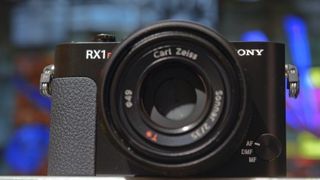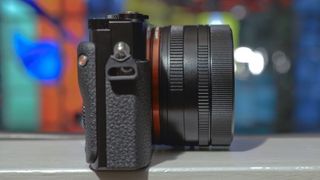Why you can trust TechRadar
This is one camera that is all about the performance. For £2,500 / US$2,800 / AU$3,000, you're expecting to get a lot of bang for your buck, and of course, like its predecessor/sibling, the Sony RX1-R gives you a heck of a lot.
Much of what we can say about the image quality from the Sony RX1-R is the same as we can say about the original Sony RX1. Colours produced by it are fantastic, being bright and punchy without being overly saturated.
If you want to boost those colours even more, there's a variety of options under Creative Styles to get you started. You could use Vivid, for instance, while shooting particularly bright flowers. Or you might want to be more faithful to actual skin tones and use Neutral.

The headline feature of the Sony RX1-R, though, is of course its capability for resolving detail. The original Sony RX1 wasn't exactly a slouch when it came to fine detail, but Sony's engineers have removed the anti-aliasing filter from the R variant, which should make it capable of producing extremely detail-rich images.
For the most part we have been extremely impressed with what the Sony RX1-R is capable of. Examining images at 100% does indeed reveal an incredible amount of detail, especially when compared to the same scene shot with the Sony RX1.
We have taken quite a few images of the same scene with both cameras, which you can compare for yourself in the Sample Images section of this review. By reviewing images at actual pixel size, we can see much finer detail is resolved, with less incidence of image smoothing.

However, on the downside, this does mean that the incidence of noise is also increased, so it will depend on your preference as to which you prefer to live with. If you're more concerned about detail than noise, then this is a good option. If you're worried about noise, then perhaps the Sony RX1 is more suited to you.
That's not to say that the Sony RX1-R's low light performance is bad. Images remain free of noise at the lower end of the sensitivity scale, up to around ISO 1600. From here onwards, noise does begin to creep in, but results remain impressive up to around ISO 3200.
We can see a fair amount of noise at images shot at ISO 5000 and 6000, but only when examining images at 100%, and in comparison to the Sony RX1. If we were looking at these images in isolation, we'd be more than happy with the noise performance even at high sensitivities.

Removing the anti-aliasing filter increases the risk of moiré patterning appearing in images. This is generally only a problem if you photograph subjects with repeating patterns, such as window blinds, (some) fabrics and materials or intricate brickwork and architectural detail.
We've not really found moiré patterning to be a problem, even when shooting subjects with fine detail. However, if you do find it appearing in your images, it's relatively easy to remove in post-production using programs such as Photoshop Lightroom. This might be a little annoying if you're having to apply it to every image you shoot, but for the average user this seems unlikely.
Still, it's worth thinking about the subjects you're likely to be shooting when choosing between the Sony RX1 and Sony RX1-R variants, especially since they are both equally priced.

Aside from removing the anti-aliasing filter, Sony has not made any other improvements to the Sony RX1-R. One of the biggest let downs of the original, and remaining here, is battery life.
For a camera which should be an ideal street photography tool, it's a little disappointing that you have to invest in a second battery if you want to make it through a full day of shooting.
As with the camera's build quality and handling, you may find it beneficial to read our original Sony RX1 review for more in-depth analysis of the Sony RX1-R's image performance.
Amy has been writing about cameras, photography and associated tech since 2009. Amy was once part of the photography testing team for Future Publishing working across TechRadar, Digital Camera, PhotoPlus, N Photo and Photography Week. For her photography, she has won awards and has been exhibited. She often partakes in unusual projects - including one intense year where she used a different camera every single day. Amy is currently the Features Editor at Amateur Photographer magazine, and in her increasingly little spare time works across a number of high-profile publications including Wired, Stuff, Digital Camera World, Expert Reviews, and just a little off-tangent, PetsRadar.


